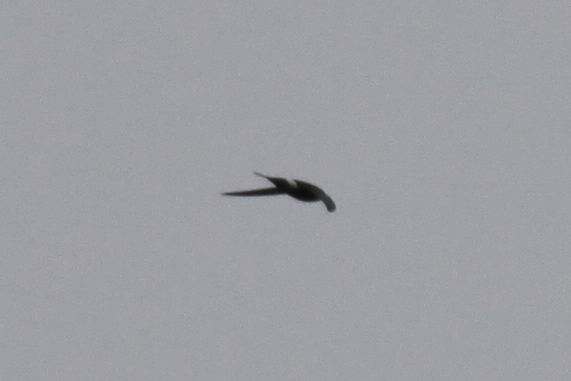Over the past week or so there have been a number of scarce/rare birds in the region, which we’ve been able to catch up with. First was the singing Melodious Warbler in a pine plantation near Retford. ‘Melody’ Warbler, rather inappropriately nick named, since their song is a rather excitable nasal scratchy tune, are quite a rare bird in the east of Britain, being more typically an overshooting western Mediterranean migrant to Devon & Cornwall. The bird, still present this morning and singing for it’s tenth day, was easy to locate but much less easy to see (let alone photograph!)
This was our second ‘Hippo’ (Hippolais family of Warblers) of the year and a UK ‘Lifer’ for Jane.
Yesterday we revisited old haunts and birding colleagues (- hello again Frank!) to see a really nice and reasonably close Surf Scoter in Filey Bay, on the Yorkshire Coast. A typical mid-summer species, but one usually found much further north, off the Scottish coast. It was in the company of half a dozen Common Scoter and is easily picked out (even at relatively long distances or poor weather conditions) by the rather ‘clown-like’ white, yellow and red beak and head markings.
It’s been more than a decade since we last saw this species as part of our legendary ‘Duck trilogy’ trip to Scotland, to visit my brother. Then it was Surf Scoter, Black Duck and King Eider – now that was a trip to remember!
The last of this weeks unusual species was a moulting Ring-Necked Duck – a North American species, at Catterick racecourse. Once we’d found the fishing lake, in the middle of the course, it was a reasonably straightforward matter to study the dozen or so Tufties (Tufted Duck) to spot the odd one out. Since there is a strong resemblance to it’s English cousin, care is needed with the relevant features – domed head peaked at the rear with no sign of a tuft, brownish tones to the otherwise greyish flanks and a white sub-terminal ring around the beak.
Ring-necked Duck are an ‘ornamental’ species sometimes kept here in captivity, but genuine vagrants do regularly occur in the UK … and this was definitely one of those!!
















